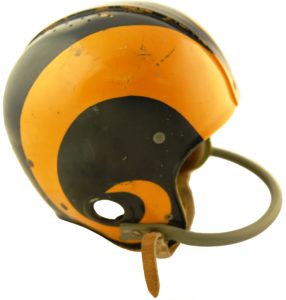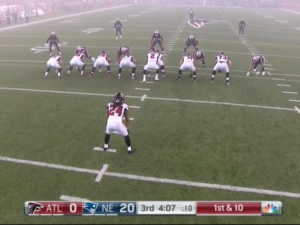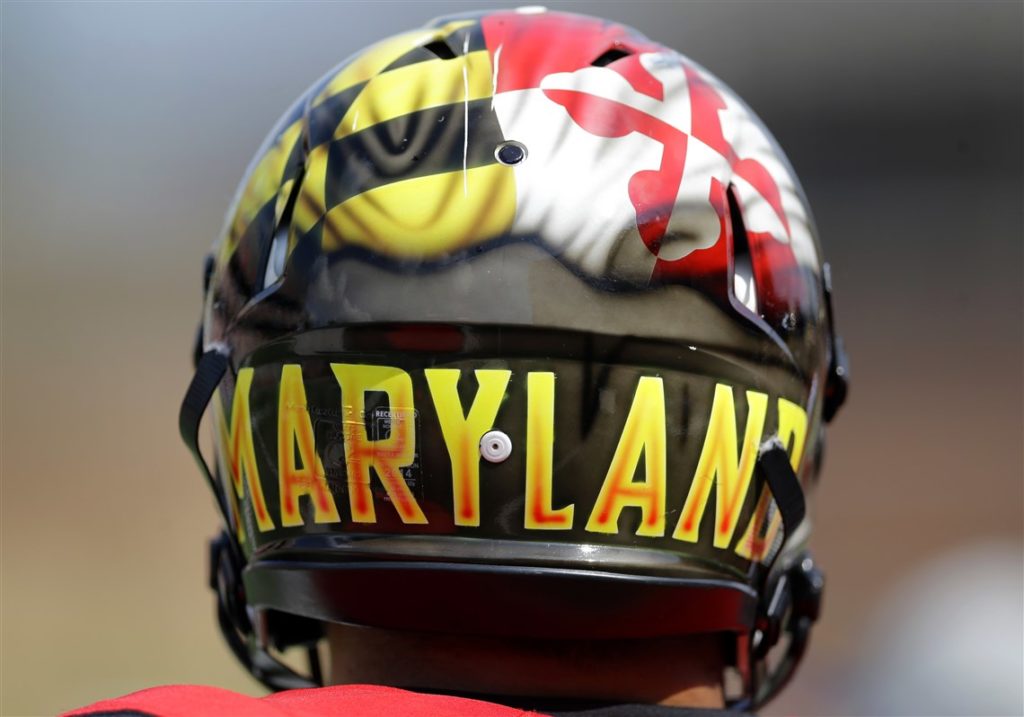Over the past half decade or so many college football teams have become experimental with their helmet and jersey designs. The University of Oregon knows a thing or two about this subject. When I was watching the Clemson v. Maryland game this afternoon I was blown away by the design of Maryland’s helmets and jerseys, specifically the helmets. They were badass. More badass than any football helmets I’ve ever seen. But why? What was it about these helmets that made them so much more attractive than any other football helmets?
As I started thinking about this question I realized I didn’t know much about the history of football helmets, so I did some digging. My research on helmets in the National Football League in the United States surfaced some interesting information. Apparently the origin of the football helmet dates back to 1896 when leather was fashioned into a protective headpiece. Eventually these primitive helmets contained padded leather which made them closely resemble the helmets used by aviators at the time. Despite the creation of the leather football helmet, injury rates remained high and many players chose not to wear one. It wasn’t until the 1920s that leather football helmets became widely used, but still they provided little protection and were uncomfortable to wear.
The year 1938 marked the first time football helmets were made out of plastic rather than leather. These plastic helmets were much more comfortable to wear and provided better safety for the players. Following this big advance in technology, the NFL required most players to wear helmets during the 1940s and by the 1950s nearly every NFL player wore a plastic helmet. While further advancements to the football helmet have produced modern helmets with a different look than their predecessors, the basic concept of helmet design remains the same: protect the player’s head with a hard outer shell and padding inside.
Alright, so that’s the history of football helmets. When did designs and logos enter the picture? Well, again we go back to the 1940s when Fred Gerhke, a halfback for the Los Angeles Rams who was also trained in art, hand painted his interpretation of the Rams’ logo onto his leather helmet. I can’t find information about whether he was the only player on the field with a painted helmet, but if he was I’m sure that must have been quite a remarkable sight.

Gerhke’s logo was eventually reproduced onto plastic helmets and remains on the Rams’ helmets today. Currently, the Cleveland Browns are the only NFL football team with no logo on their helmets. In fact, the Browns’ current helmet design is what nearly all of the helmets looked like in the NFL in 1960. The solid color with a stripe down the center design was ubiquitous. A few teams threw the player’s number onto the helmet, but there were no logos. That fact changed from 1962 onward. During this season many teams slapped logos onto the side of their helmets with little to no change to the existing ‘solid color with a stripe down the middle’ design. The landscape hasn’t changed very much since then either.
Football helmet design in the NFL has historically been dull despite its beginnings with the artist Gerhke. Its approach since the 60s has been based purely on logic: if players spend most of their time looking lengthwise down the field and most of the spectators are on the left or right side of the field, put the team’s logo on the left and right sides of the helmet. Every team except the Pittsburgh Steelers have done exactly that. They’ve taken the team’s logo, centered it on the side of the helmet, and provided plenty of negative space around the logo. This way of thinking is boring, dated, and played out.
However, the old way of thinking about helmet design may be coming to an end as college teams embrace progressive looking uniforms. This shift has largely been pushed ahead by the clothing and shoe companies which sponsor college teams. The effort to give teams more distinctive uniform designs is causing uniforms to break the traditional design rules.
Modern broadcast television and video games are changing uniforms as well. Gone are the days when the TV broadcast of a game only used a few cameras on the sideline. Nowadays, the crew covering a game may be using as many as two dozen cameras which focus on various aspects of the field, sidelines, and spectators from all sorts of different angles. The near-360º coverage of the game means that fans are no longer seeing the players exclusively from the left and right sides. Instead, we see close-up shots of players in high definition from all imaginable angles.
When it comes to football video games, few have reached the level of popularity attained by the Madden NFL series. In fact, Madden video games have become so popular that the primary camera angle from the video game has entered television broadcasts. Colloquially known as “Madden Cam”, the shot from the Skycam positioned above and behind the running back is becoming ever more common in broadcasts. For many years football video games sought to imitate real life, whereas today we are seeing real life imitate elements of video games.

The people who design modern football uniforms now consider all of the factors mentioned above when preparing next year’s jerseys. When I viewed Maryland’s uniforms on TV and thought, “Wow, those look good!”, I was witnessing the successful efforts of designers who understand how to make a uniform attractive from many angles. Plus, it doesn’t hurt that Maryland’s helmets look like they could pass for motorcycle helmets.
Before I end this post with complete praise for Maryland football, I need to note that not all of their uniform designs have been successful…


